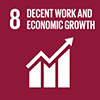Description/achievement of initiative
In 1998, Japan's government initiated its Top Runner program which established energy efficiency standards for 21 products. As a result of the program, rates of energy efficiency required for 21 products have all been met or exceeded.
Source: World Resources Institute (2011) A Compilation of Green Economy Policies, Programs, and Initiatives from Around the World. The Green Economy in Practice: Interactive Workshop 1, February 11th, 2011
Japan's Top Runner program sets efficiency standards for 21 products (e.g., vending machines, air conditioners, TVs) sold in Japan. On a regular basis, officials test all the products currently available in a category, determine the most efficient model, and make that model's level of efficiency the new baseline. Manufacturers have the obligation to make efforts to achieve the new baseline within four to eight years. If a manufacturer does not meet the target or fails to make a good faith effort, this fact is publicized. Products which meet the energy efficiency standard receive a Top Runner label; products that do not meet the baseline are labeled differently. This drives other companies to try to make even more efficient models to compete, which in turn means the next time officials set standards, the best available products will be even more efficient.
The benefits of the program are as follows:
- Cost savings from reduced energy consumption;
- Rates of energy efficiency required for 21 products have all been met or exceeded;
- Reduced greenhouse gas emissions due to decreased energy use;
- Increased market opportunities for energy-efficient products;
- Penetration rate of program-compatible vehicles into the new-vehicle market increased from 11% in 1997 to over 90% in 2008 due partly to the program.
Implementation methodologies
Arrangements for Capacity-Building and Technology Transfer
Coordination mechanisms/governance structure
Partner(s)

